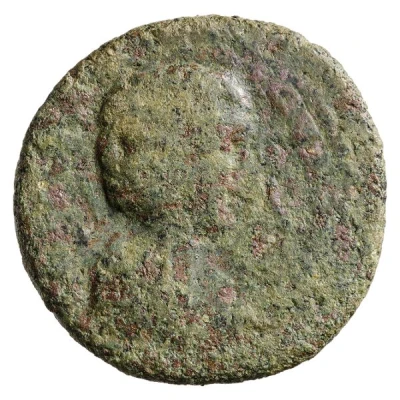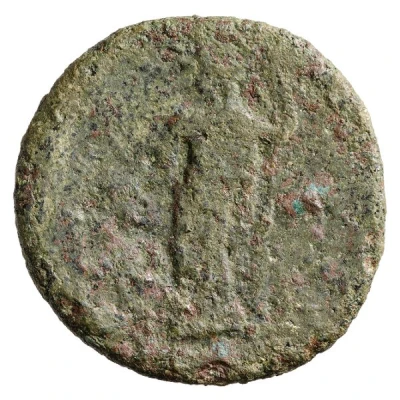


© Münzkabinett der Universität Göttingen (CC BY-NC 4.0 DE)
Sestertius - Julia Domna CERES S C; Ceres
| Bronze | 15.4 g | 21.5 mm |
| Issuer | Rome › Roman Empire (27 BC - 395 AD) |
|---|---|
| Empress | Julia Domna (193-211) |
| Type | Standard circulation coin |
| Years | 196-211 |
| Value | 1 Sestertius = ¼ Denarius |
| Currency | Denarius, Reform of Augustus (27 BC – AD 215) |
| Composition | Bronze |
| Weight | 15.4 g |
| Diameter | 21.5 mm |
| Shape | Round (irregular) |
| Technique | Hammered |
| Demonetized | Yes |
| Updated | 2024-10-06 |
| Numista | N#270339 |
|---|---|
| Rarity index | 100% |
Reverse
Ceres, draped, seated left, holding corn-ears in her right hand and torch in left hand.
Script: Latin
Lettering: CERES S C
Translation:
Ceres. Senatus Consultum.
Ceres. Decree of the Senate.
Comment
Mass varies: 5.416–20.37 g;Example of this type:
Münzkabinett der Universität Göttingen
Source:
Online Coins of the Roman Empire (OCRE)
Interesting fact
One interesting fact about this coin is that it features an image of Ceres, the Roman goddess of agriculture and fertility, on its reverse side. This highlights the importance of agriculture and fertility in ancient Roman society, and the fact that the Roman Empire was heavily reliant on agriculture for its economy and food supply. Additionally, the image of Ceres on the coin may have been meant to symbolize the prosperity and abundance of the Roman Empire during the reign of Julia Domna, who was the empress of Rome from 196 to 211 AD and was known for her wisdom and generosity.